(1) On log trucks equipped with stakes, the following requirements must apply:
(a) In the hauling of a one log load, one wrapper chain or cable must be required and secured to the rear bunk. The log must be properly blocked or secured in a manner which will prevent it from rolling or shifting. An additional wrapper secured to the front bunk is optional.
(b) In the hauling of two log loads, not less than two wrapper chains or cables must be used to secure the load. The logs must be properly blocked to prevent them from rolling or shifting.
(c) On loads consisting of three or four logs not over forty-four feet in length, the load must be secured by not less than two properly spaced wrapper chains or cables. Ends of short logs not secured by such wrappers must be secured with extra wrappers. If any log is over forty-four feet in length, the load must be secured by not less than three properly spaced wrappers.
(d) Loads consisting of five or more logs:
(i) When the logs are all seventeen feet or less in length, the load must be secured by not less than two properly spaced wrappers.
(ii) When any log is over seventeen feet in length, the load must be secured by not less than three properly spaced wrappers. Log(s) loaded on top or in outside saddles of a load must not be transported unless secured by at least two wrapper chains or cables, one of which must be placed near each end of such log.
(2) On log trucks equipped with chock blocks the following requirements must apply:
(a) In the hauling of a one log load, one wrapper chain or cable shall be required and secured to the rear bunk and the log must be properly blocked in a manner to prevent it from rolling or shifting.
(b) One additional wrapper chain or cable shall be required on log trucks using chock blocks over and above the requirements in subsection (1)(c) and (d) of this section.
(3) In the case of short logs loaded crosswise, the following method of securing the load must be used if the truck or trailer is not provided with solid ends of a height sufficient to prevent any log in the load from rolling off:
Not less than two chock blocks must be used at each open end of the vehicle and the load must be held with at least two wrapper chains or cables. The wrappers must be firmly attached to the end of the truck or trailer. Rigid standards or stakes may be used in lieu of chock blocks but each such standard or stake must be either rigidly connected to the bed of the truck or trailer or must be placed in a tight-fitting socket at least 12 inches in depth. Other means furnishing equivalent security may be acceptable.
(4) When two wrappers are required, they must be applied within six feet of the front and rear bunks. When more than two wrappers are required, the front and back binder must be applied within six feet of the front and rear bunks.
(5) To properly secure short logs, binders must be placed near the end, not less than twelve inches from the end of the log.
(6) Log(s) loaded on top or in outside saddles of a load must not be transported unless secured by at least two wrapper chains or cables, one of which must be placed near each end of such log.
(7) All wrappers and binders must be fastened in place prior to tightening to prevent the displacement of logs on the top of the load.
(8) All wrapper chains or cables, except in the case of one log load, must entirely surround the load. This does not apply to gut-wrappers.
(9) Gut-wrappers, when used, must be adjusted so as to be tightened by, but not carry the weight of the logs above them.
(10) Wrappers must not be thrown over the load until personnel are in the clear.
(11) Each log not contained within the stakes must be secured with at least two wrappers before the truck leaves the vicinity of the landing/loading area.
(12) While moving logs, poles, or log chunks within sorting or mill yards, that could roll or slide off the truck due to snow or ice conditions, or the logs or log chunks do not extend beyond the stakes, at least two wrappers and binders must be used regardless of the height of the load.
(13) Wrapper chains or cables, binders, fasteners, or attachments thereof, used for any purpose as required by these standards must have a minimum breaking strength of not less than fifteen thousand pounds and must be rigged so that it can be safely released.
Note: | 3/8-inch hi-test steel chain, 7/16-inch improved plow steel wire rope of 6 x 19 or 6 x 37 construction, or materials having equivalent strength, when in compliance with the requirements herein contained, will be acceptable. (The diameter of the wire rope is immaterial as long as it meets the minimum breaking strength requirements.) |
Note: | Nylon straps and ratchet binders having an equivalent breaking strength may be used when securing loads on (hay rack) log hauling systems. |
(14) A loaded logging truck required to have wrappers by this section, may be moved within the loading area without wrappers only if such movement does not present a hazard to workers.
(15) For the purposes of this standard, applied bundle straps or banding are not acceptable as wrappers and binders.
(16) All loose ends of wrapper chains or cables must be securely fastened so as to prevent their swinging free in a manner that will create a hazard.
(17) Binders for securing wrappers on logging trucks must be fitted with hooks of proper size and design for the wrapper chain being used.
(18) Wrappers must be removed from service when any of the following conditions exist:
(a) Excessively worn links on chains;
(b) Deformed or stretched chain links;
(c) Cracked chain links; or
(d) Frayed, stranded, knotted, or otherwise defective wire rope.
(19) Pipe extension handles (swedes) for tightening or securing binders must be no longer than thirty-six inches. Care must be taken that a sufficient amount of the pipe extends over the binder handle.
(20) Defective binders must be immediately removed from service.
Note: | See Figures 25 through 35 for illustrations of placement and number of wrappers. |
Placement and Number of Wrappers
One Log Load
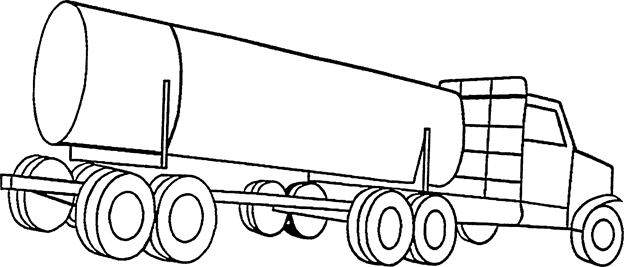 |
Figure 25: One Log Load |
Two Log Load
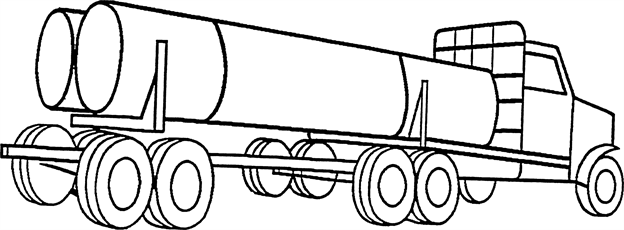 |
Figure 26: Two Log Load |
Three or Four Log Load 44 Ft. or Less
 |
Figure 27: Three or Four Log Load 44 feet or less |
Three or Four Log Loads More Than 44 Feet
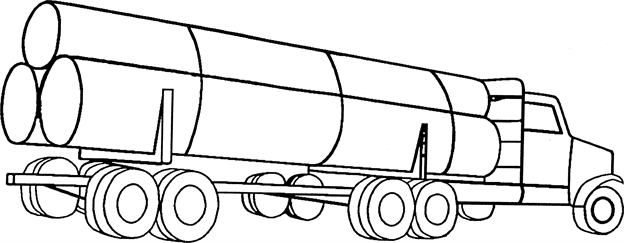 |
Figure 28: Three or Four Log Loads more than 44 feet |
Five or Six Log Load All Logs 17 Feet or Less
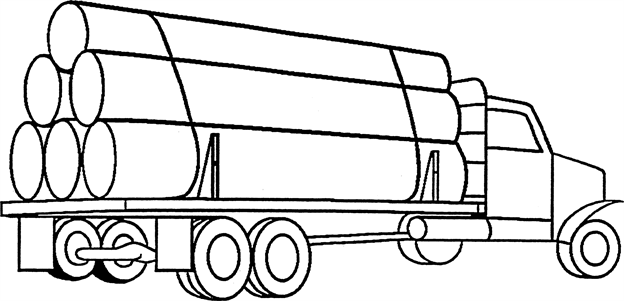 |
Figure 29: Five or Six Log Load All Logs 17 feet or less |
Seven or More Log Load All Logs 17 Feet or Less
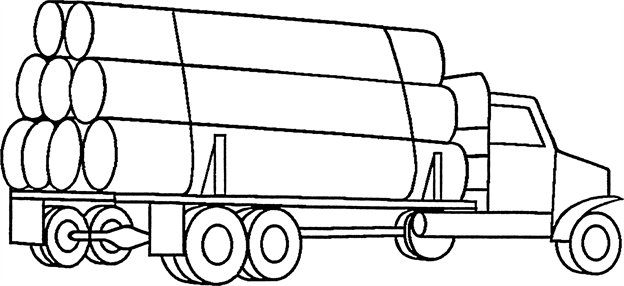 |
Figure 30: Seven or More Log Load all Logs 17 feet or less |
Five or More Log Load If Any Logs Are More Than 17 Feet
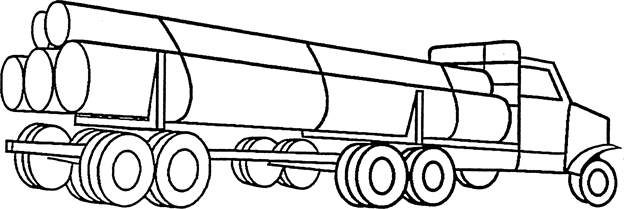 |
Figure 31: Five or More Log Load if any Logs are more than 17 feet |
Proper Support for Logs
 |
Figure 32: Proper Support for Logs |
Outside Logs or Top Logs
 |
Figure 33: Outside Logs or Top Logs |
A Wrapper Must Be Near Each Bunk
 |
Figure 34: A Wrapper must be near each bunk |
Short Logs Loaded Crosswise
 |
Figure 35: Short Logs Loaded Crosswise |
Note: | All loads of logs on logging trucks equipped with chock blocks instead of stakes, must have at least one additional wrapper over and above the requirements for trucks equipped with stakes, except on one and two log loads and trucks with short logs loaded crosswise. |